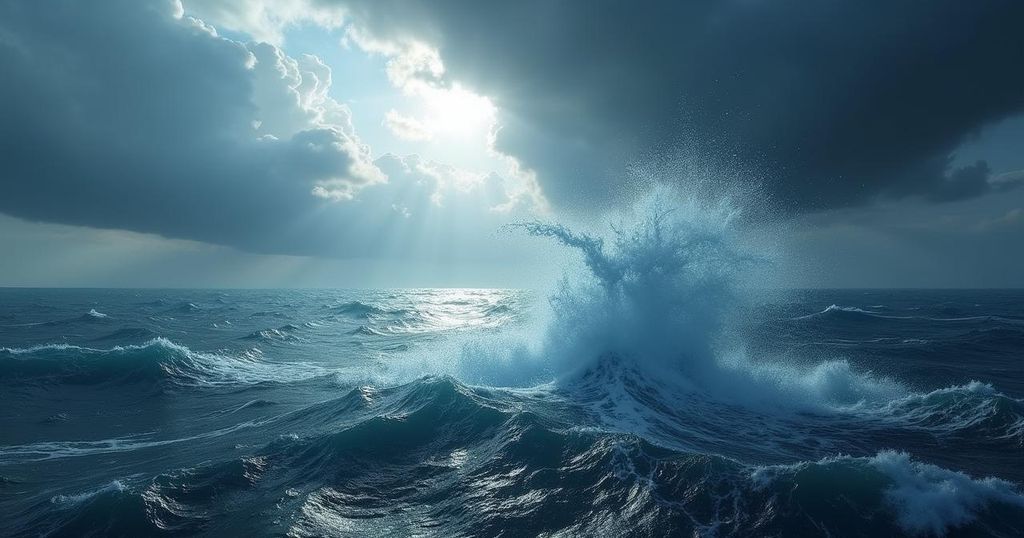Latest Developments in the 2024 Atlantic Hurricane Season: Potential for New Storm in the Central Atlantic

The 2024 Atlantic hurricane season is highly active, with meteorologists tracking a potential storm, dubbed Invest 94L, that has a 50 percent chance of developing into a named storm, possibly Nadine, this week. The system is currently situated between Africa and the Lesser Antilles, showing initial signs of development. While monitoring continues, significant atmospheric conditions may influence its trajectory and strength.
The 2024 Atlantic hurricane season has remained notably active, with meteorologists observing a potential new system forming in the central Atlantic, designated as Invest 94L. Currently located near the midway point between Africa and the Lesser Antilles, this system is under close watch due to its estimated 50 percent chance of developing into a named storm, potentially designated as Nadine. The Lesser Antilles, Puerto Rico, Hispaniola, and the southeastern Bahamas should maintain vigilance as this system progresses. A clearer picture of the storm’s trajectory and development potential will emerge by midweek, likely Wednesday or Thursday. So far this tumultuous season has seen the United States impacted by five notable hurricanes—Beryl, Debby, Francine, Helene, and Milton—with two making landfall as major hurricanes (Category 3 or higher). Experts had forecasted a particularly active hurricane season, and the reported Accumulated Cyclone Energy (ACE) has already exceeded the average for this time of year by 34 percent. Invest 94L is presently situated several hundred miles southwest of the Cabo Verde Islands, embedded in a dry atmosphere that has hindered its development. After displaying minimal storm activity, it is anticipated that conditions will improve as the system progresses westward into an environment enriched by moisture and warmer sea temperatures. Forecast models suggest that by Thursday, there may be sufficient conditions for this system to develop further into a tropical depression or storm. However, wind shear remains a significant concern, which will limit rapid development. As the storm tracks toward the Leeward Islands and Puerto Rico, it may experience some gradual strengthening. There exists a possibility that this system could reach hurricane status as it approaches Hispaniola over the weekend. Nonetheless, an impending cold front may disrupt its progression by introducing dry air and upper-level winds, potentially diminishing its intensity. Current assessments indicate a minimal threat to the mainland United States. Additionally, there is another area of atmospheric rotation not currently under the National Hurricane Center’s purview, which could intensify in the western Caribbean later this week. Should this occur, the storm might migrate toward Nicaragua, Honduras, Guatemala, or Belize, bringing the potential for heavy rainfall, mudslides, and strong winds dependent on its eventual strength.
As the Atlantic hurricane season continues through November 30, meteorological experts are closely monitoring emerging systems that could lead to additional tropical storms or hurricanes. This season has already demonstrated high activity, surpassing previous expectations with numerous storms impacting the U.S. coastline. The phenomenon of Accumulated Cyclone Energy (ACE) is a critical indicator used to assess storm energy output and potential severity, showcasing that the current season is significantly more intense than average, raising concerns for further developments in the coming weeks.
In summary, the potential storm system Invest 94L is currently under observation as it advances westward through the Atlantic. There is a 50 percent chance that it could form into a named storm by midweek, impacting various islands in the Caribbean. While there are possibilities for further intensification, particularly as it approaches Hispaniola, various atmospheric conditions may hinder its development. The broader Atlantic hurricane season remains notably active, with a heightened risk for additional systems forming in the near future.
Original Source: www.washingtonpost.com






